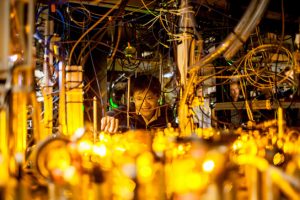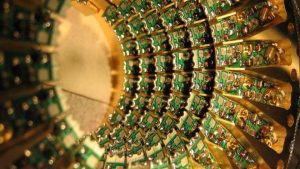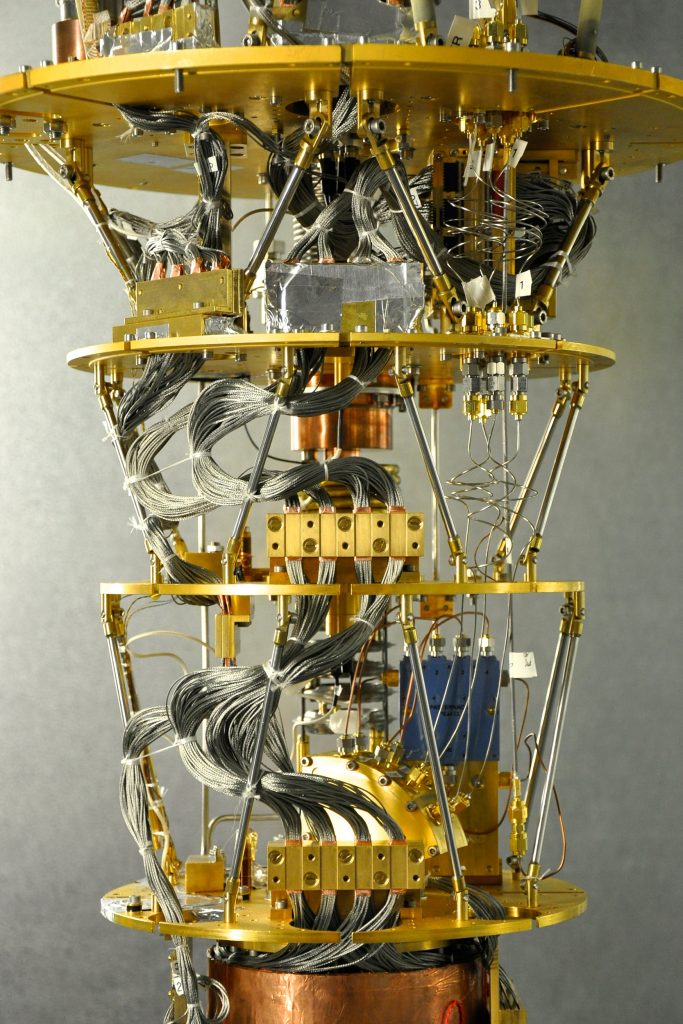For most of our history, human technology consisted of our brains, fire, and sharp sticks. While fire and sharp sticks became power plants and nuclear weapons, the biggest upgrade has happened to our brains. Since the 1960’s, the power of our brain machines has kept growing exponentially, allowing computers to get smaller and more powerful at the same time. But this process is about to meet its physical limits. Computer parts are approaching the size of an atom. To understand why this is a problem, we have to clear up some basics. In a Nutshell
– By Kurzgesagt


In normal computers, bits are the smallest unit of information. Quantum computers use qubits which can also be set to one of two values. A qubit can be any two level quantum system Such as a spin and a magnetic field or a single photon 0 and 1 are this system’s possible states like the photons horizontal or vertical polarization In the quantum world, the qubit doesn’t have to be just one of those It can be in any proportions of both states at once This is called superposition.
But as soon as you test its value, say, by sending the photon through a filter It has to decide to be either vertically or horizontally polarized So as long as it’s unobserved, The qubit is in a superposition of probabilities for 0 and 1 and you can’t predict which it’ll be But the instant you measure it collapses into one of the definite states.
Superposition is a game changer. For classical bits can be in one of two to the power of four different configurations at a time. That’s 16 possible combinations at which you can use just one for qubits in superposition, however, can be in all those 16 combinations at once. A computer is made up of very simple components doing very simple things. Representing data, the means of processing it, and control mechanisms. 

Transistors are combined to create logic gates which still do very simple stuff. For example, an AND Gate sends an output of 1 if all its inputs are 1 and an output of 0 otherwise. Since all basic operations are literally simpler than first-grade math, you can imagine a computer as a group of 7-year-olds answering really basic math questions. 

So, a switch is a passage that can block electrons from moving in one direction. Today, a typical scale for transistors is 14 nanometres which are about 8 times less than the HIV virus’ diameter and 500 times smaller than a red blood cell. As transistors are shrinking to the size of only a few atoms Electrons may just transfer themselves to the other side of a blocked passage via a process called Quantum Tunnelling In the quantum realm, physic works quite differently from the predictable way were used to and traditional computers just stop making sense. 


